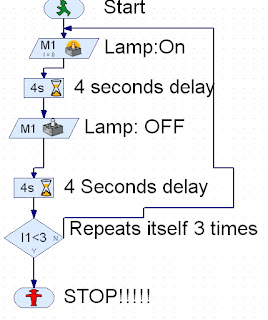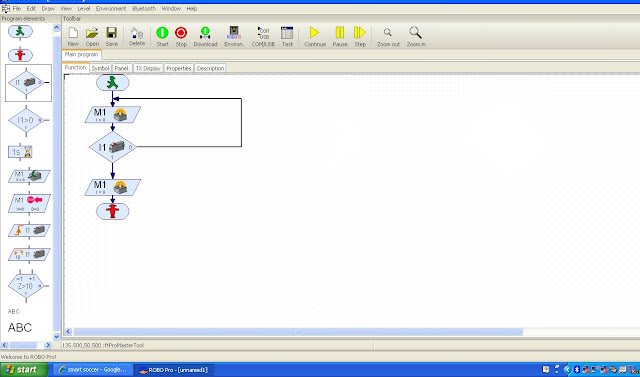Organize it!: Title your post and organize it by section in a logical manner.
Brainstorm!: Provide at least four of your team’s brainstorming ideas for the design solution. This should include brainstorming sketches. Each sketch should include labels and descriptions for communication.
Brainstorm Idea 1:
Brainstorm Idea 2:
Brainstorm Idea 3:
Brainstorm Idea 4:
Final Implementation - Video!: Embed a video that showcases your solution in action!Reflection: Address the four feedback types that we use in our courses (+, -, ?, !). Solicit feedback from someone outside of your team as well.
Some questions to consider in this section: How well did you accomplish your objectives? What would your team do differently with your design solution and why? Do the results fulfill the problem statement? Provide a brief explanation of what you learned, the challenges of working in a design team, and the purpose of the design problem.+: It is compact, and we probably used the least amount of parts. It has a simple design.
- : might take a long time to sort, needs to much programing.
? : Could making it bigger make it easier, could using pistons be easier than motors.
! : Make it bigger!!, use pistons for the sorting(faster).
Reference: Post a hotlink to material you referenced on the internet. Explain why this information is significant to your project.
Product Achievements:
Marble Sorting (some achievments scored multiple times):
Sort one marble (x1)Sort two marbles (x1)
Sort three marbles (x1)
Sort four marbles (x1)
Sorting Speed (15 marbels total: 3ea of 5 types):
Process 15 marbles in less than 2:00 minutes.
Process 15 marbles in less than 1:45 minutes.
Process 15 marbles in less than 1:30 minutes.
Process 15 marbles in less than 1:15 minutes.
Process 15 marbles in less than 1:00 minute.
Process 15 marbles in less than 45 seconds.
Process 15 marbles in less than 30 seconds.
Marble Delivery (may use non-fischertechnik materials to create a "hopper" to drop marbles into for "Drop" achievements):
Drop marbles from 6" above machine
Drop marbles from 1' above machine
Drop marbles from 2' above machine
Drop marbles from 6' above machine
Systems (not including motor or piston used to charge your pressure vessel):
Use one piston
Use two pistonsUse pneumatics but less than three pistons
Brainstorm!: Provide at least four of your team’s brainstorming ideas for the design solution. This should include brainstorming sketches. Each sketch should include labels and descriptions for communication.
Brainstorm Idea 1:
Brainstorm Idea 2:
Brainstorm Idea 3:
Brainstorm Idea 4:
CAD!:
Use our Inventor CAD software to model a prototype or your final design. Post screenshots of your model.
Enter the Matrix: Evaluate your solution ideas (4 minimum) using a decision matrix. Determine the best solution to the problem. Explain your rating system and share insight on why you rated your solutions as you did.
Use our Inventor CAD software to model a prototype or your final design. Post screenshots of your model.
Enter the Matrix: Evaluate your solution ideas (4 minimum) using a decision matrix. Determine the best solution to the problem. Explain your rating system and share insight on why you rated your solutions as you did.
Design Solution( Machine 3 design): Create a detailed pictorial sketch or use 3D modeling software to document the best solution, based upon your team’s decision matrix. Your sketch or 3D model should include a rationale for the design selected as the final design solution. Each sketch should include labels and descriptions for communication."I've Made a Few Special Modifications...": Document modifications made to your design during implementation. Explain the reason for the modifications and describe how the new design solution will solve the problem. "Story" is the split between expectation and outcome. Tell us a story regarding what your plan was and how it actually came out! Use photos and sketches to call out three changes. (Nerd points if you know where the quote for this Achievement title comes from)
One of our main modifications was puting magnets at the end of the ramp in order to get the metal marble with the magnet instead of the color sensor. This allowed us to use light to sort wood as metal and wood both let 0 light by.
(Han Solo.)
(Han Solo.)
Final Implementation: This section will showcase your final hardware and software solution. Include photos of your hardware and program. Call out atleast three key features of your design that were significant to its performance. Report how your solution performed in the challenge.
Some questions to consider in this section: How well did you accomplish your objectives? What would your team do differently with your design solution and why? Do the results fulfill the problem statement? Provide a brief explanation of what you learned, the challenges of working in a design team, and the purpose of the design problem.+: It is compact, and we probably used the least amount of parts. It has a simple design.
- : might take a long time to sort, needs to much programing.
? : Could making it bigger make it easier, could using pistons be easier than motors.
! : Make it bigger!!, use pistons for the sorting(faster).
Reference: Post a hotlink to material you referenced on the internet. Explain why this information is significant to your project.
Product Achievements:
Marble Sorting (some achievments scored multiple times):
Sort one marble (x1)Sort two marbles (x1)
Sort three marbles (x1)
Sort four marbles (x1)
Sorting Speed (15 marbels total: 3ea of 5 types):
Process 15 marbles in less than 2:00 minutes.
Process 15 marbles in less than 1:45 minutes.
Process 15 marbles in less than 1:30 minutes.
Process 15 marbles in less than 1:15 minutes.
Process 15 marbles in less than 1:00 minute.
Process 15 marbles in less than 45 seconds.
Process 15 marbles in less than 30 seconds.
Marble Delivery (may use non-fischertechnik materials to create a "hopper" to drop marbles into for "Drop" achievements):
Drop marbles from 6" above machine
Drop marbles from 1' above machine
Drop marbles from 2' above machine
Drop marbles from 6' above machine
Systems (not including motor or piston used to charge your pressure vessel):
Use one piston
Use two pistonsUse pneumatics but less than three pistons
Use at least one motor























